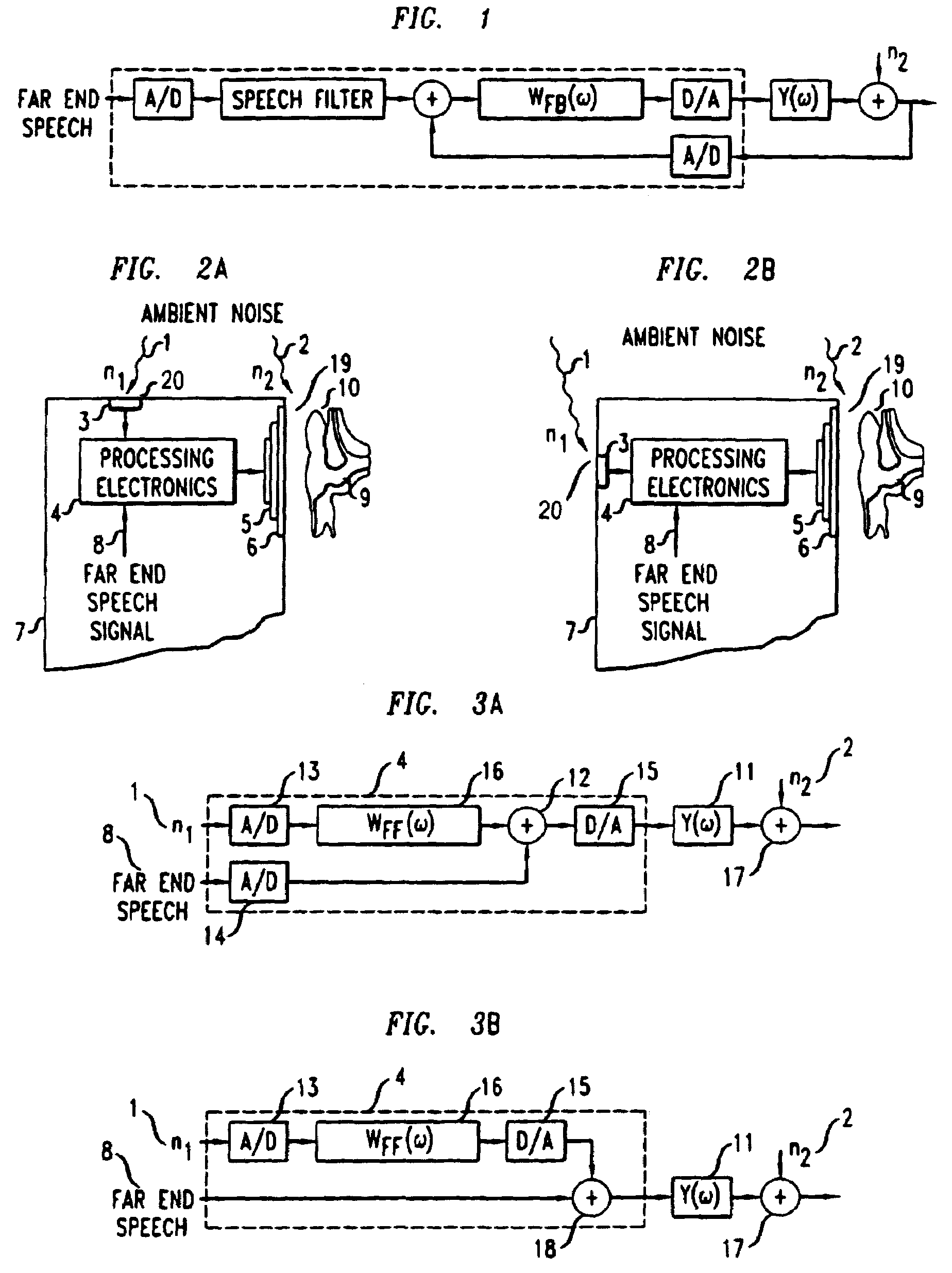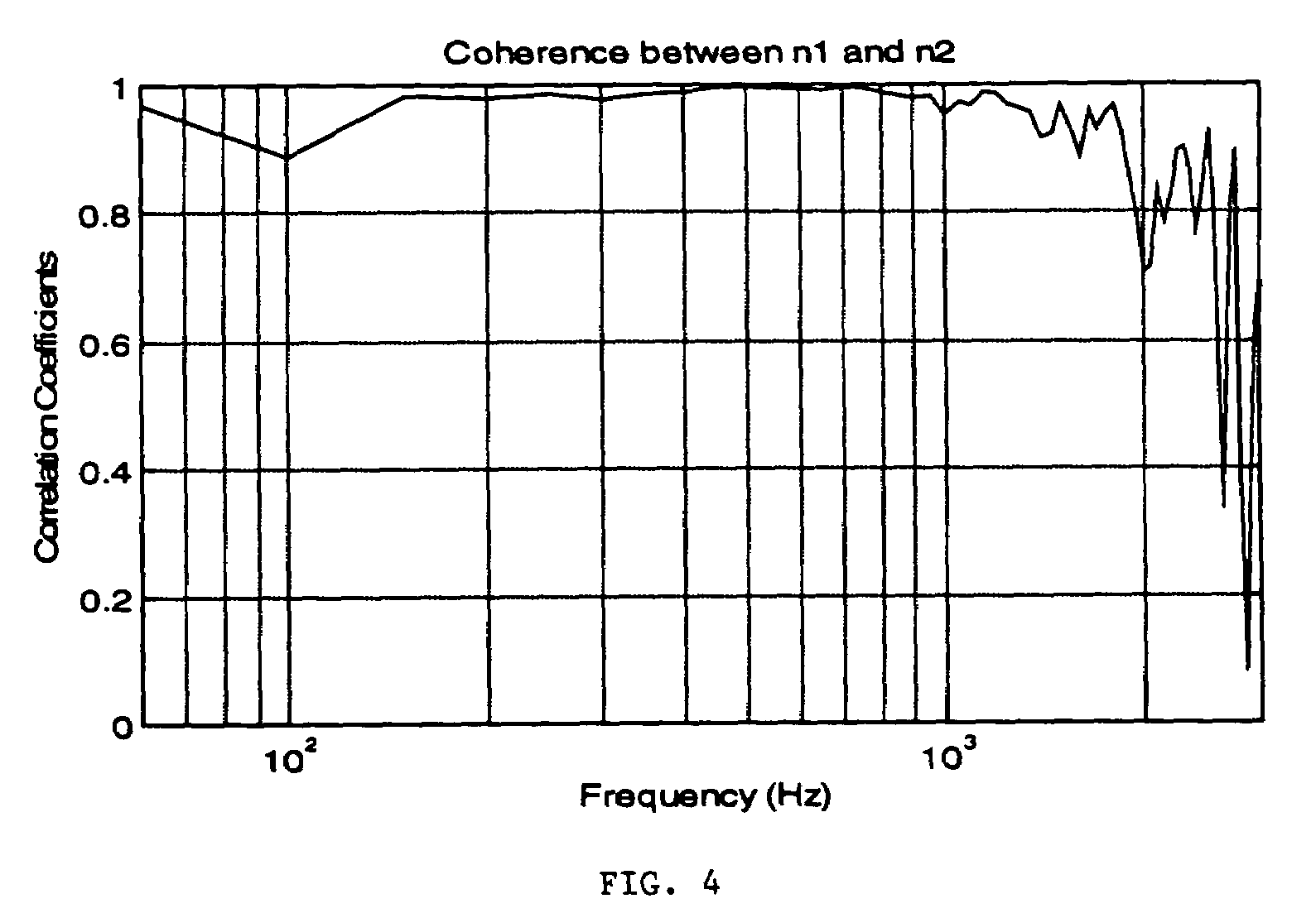Telephonic handset employing feed-forward noise cancellation
a telephonic handset and forward design technology, applied in active noise control, instruments, electrical transducers, etc., can solve the problems of inability to achieve noise cancellation, inability to reduce noise, and inability to provide forward design noise cancellation at an inferior level, so as to reduce parts costs and assembly costs, and reduce noise cancellation
- Summary
- Abstract
- Description
- Claims
- Application Information
AI Technical Summary
Benefits of technology
Problems solved by technology
Method used
Image
Examples
example
[0068]We made a fixed feed-forward noise cancellation system, incorporating the physical and algorithmic design principles described above. We tested our new system on a range of users. The average noise cancellation performance and standard deviation for the tested user group are shown in FIG. 7. As is evident from the figure, our system produces a peak average noise cancellation of close to 15 dB in the users' ears, with a standard deviation of about +3 dB.
[0069]In further tests, we found that when a far-end speech signal is also present, the users tend to position the earpiece of the handset in a way that tends to maximize the ratio of the far-end speech signal to the remaining noise. As mentioned above, this behavior bears some analogy to the tuning of a radio dial to maximize the signal-to-noise ratio out of the loudspeaker. In effect, by adjusting the position of the earpiece against his ear, a user is adjusting the ratio F(ω) / Y(ω) for his ear such that it is as close as possi...
PUM
 Login to View More
Login to View More Abstract
Description
Claims
Application Information
 Login to View More
Login to View More - R&D
- Intellectual Property
- Life Sciences
- Materials
- Tech Scout
- Unparalleled Data Quality
- Higher Quality Content
- 60% Fewer Hallucinations
Browse by: Latest US Patents, China's latest patents, Technical Efficacy Thesaurus, Application Domain, Technology Topic, Popular Technical Reports.
© 2025 PatSnap. All rights reserved.Legal|Privacy policy|Modern Slavery Act Transparency Statement|Sitemap|About US| Contact US: help@patsnap.com



